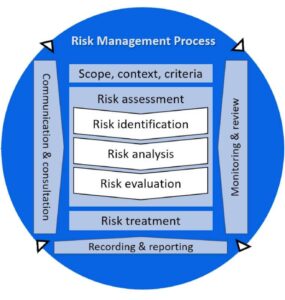Knowledge Management in Safety and Health at Work

Knowledge Management in Safety and Health at Work. This century declared that “knowledge”, research, innovation, and recognition of good business practices must become attributes of occupational health and safety management. Learning from the experiences and learning of others, and applying them more broadly in different contexts, is a challenge that organizations must take on, in this way they will be able to promote new ideas or suggest changes and provide various guidelines on the most effective way to identify the various impacts of intervention in occupational risk prevention.
Good practices
Good Practices are used in different contexts to represent recommended ways of executing an activity and can serve as a model for other organizations. In general, the concept of “good practices” refers to any experience that is guided by characteristics or objectives and convenient procedures or adequate prototypes that fit a certain need, as well as any experience that has produced positive results in the prevention of the risks by demonstrating their validity and usefulness in a specific context.
Promotion of good practices
The promotion of good practices in occupational safety and health is directly related to the current approaches on the criteria of technical relevance and efficiency of the interventions, which cover not only the management system but fundamentally the satisfaction of the needs of organizations according to the identification, assessment of hazards and the controls that are implemented against the risks.
Application of good practices
The application of good practices demonstrates how companies that are interested in the health of their workers are successful organizations, with higher rates of happiness, well-being, and productivity, characterized by strengthening the soft skills of their employees and that manage knowledge by facing and strengthening strategic, technical, educational and communicative approaches, all this in order to be competitive and stay active in the face of market demands. By managing tacit and explicit knowledge, it is expected to socialize, internalize, externalize, as well as associate good practices to turn them into a technical and systemic reality in occupational health and safety.
Various organizations in the world have made distinctions of good practices in occupational health and safety management, in contexts and with very different perspectives, and each of these proposals uses. However, some of the characteristics that are considered most relevant are:
The strategies and actions are based on basic principles and values and respond to a perspective defined by the General System of Occupational Risks.
They develop evidence-based strategies and are innovative in their application, demonstrating the ability to question and innovate in health promotion and occupational risk prevention.
They respond to an identified and prioritized need in Occupational Health and Safety.
The human resources that implement the initiative are qualified and specialized in OSH management.
They propose a monitoring system for the processes and results of the actions undertaken and generate feedback for continuous improvement.
They have a broad base of worker participation in occupational health and safety management.
They promote in some way the replication of good practice, among others.
However, recognition plays an important role in this management as an act or distinction that expresses congratulations or thanks to the organizations that actively contribute to prevention. Recognizing motivates and promotes frequent participation, and ensures quality and opportunity, as well as the excellence that triggers high-performance teams in organizations.
It is quite common that there are barriers or difficulties to the detection and transfer of good practices between organizations. These problems may be due to ignorance, the lack of systematization of knowledge, mistrust of information, or simply the consideration that these transfers are useless. For barriers, it is necessary to have the active and determined participation of the organization. Fundamentally, practices have to be demonstrable; it is necessary to document them and make them available to society in order to contribute to the improvement of the quality of life of workers, organizations, and, in general, the management of safety and health at work in the country and the world.







